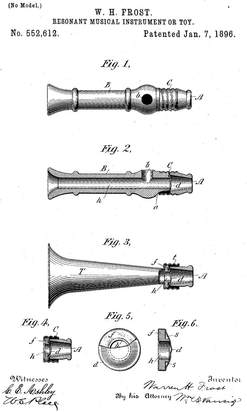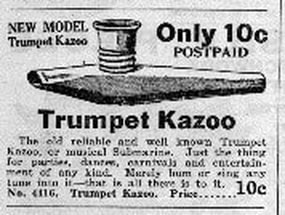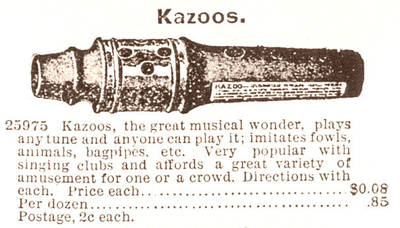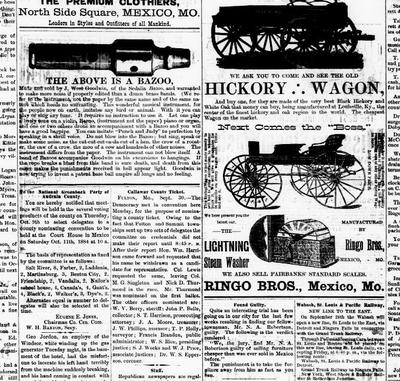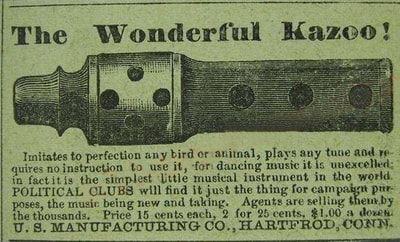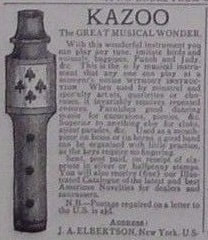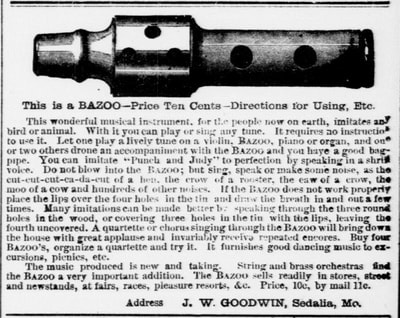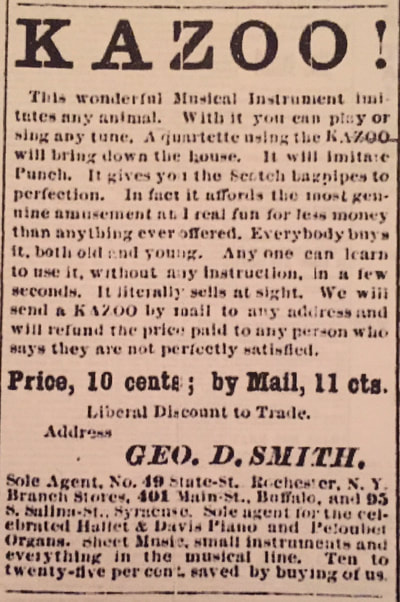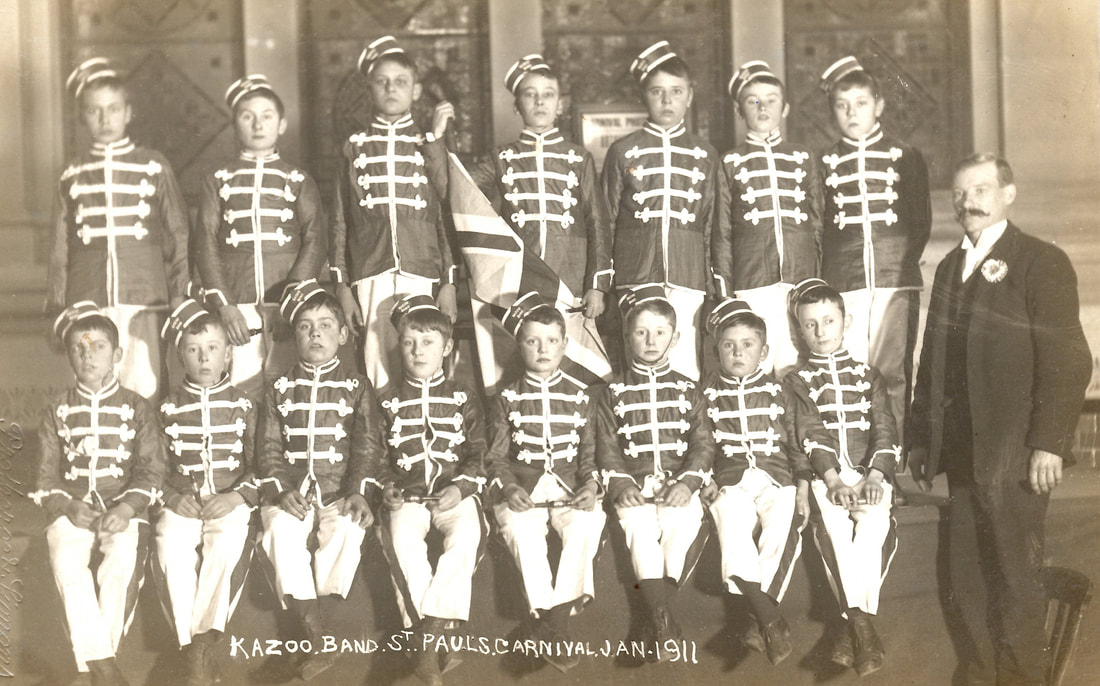As a long-time collector of kazoos, I have always been fascinated by the original kazoo patented by Warren Frost in 1883. Frost’s patent contains the following description, "This instrument or toy, to which I propose to give the name “kazoo,” may be made in many forms and of many different materials; but I prefer the construction and materials here described as being attractive, durable, and cheap."
The kazoos sold for 8 to 10 cents in the late 1880s, which is the equivalent of around $2.00 today. The low price resulted in very high sales, but unfortunately for collectors, the low price also resulted in people discarding them when they wore out. As a result, they are very rare today.
The kazoos sold for 8 to 10 cents in the late 1880s, which is the equivalent of around $2.00 today. The low price resulted in very high sales, but unfortunately for collectors, the low price also resulted in people discarding them when they wore out. As a result, they are very rare today.
The obvious disadvantage of Frost’s design was that the membrane was not accessible. The membrane was affixed directly to the body of the kazoo, and when it broke or wore out, the kazoo was discarded. This problem was somewhat lessened in another of Frost’s patents for a slightly different type of membrane instrument called the Zobo, shown below. Though the membrane was easy to access with the Zobo, it was also placed perpendicular to the flow of air through the instrument. This resulted in frequent membrane breakage.
These problems were finally solved in 1902 when George D. Smith patented the familiar submarine-shaped tin kazoo. Smith’s design allowed the user to easily change the membrane when it wore out. The original wooden kazoos appear to have disappeared from the market by the time the tin kazoo made its appearance.
I have been lucky enough to have found a handful of the original wooden kazoos over the years. Each is somewhat unique, and all of them have a hand-made quality to them. Though a few have their original membrane intact, I do not play them for fear of damaging the membranes. However, I always wondered how the sound compared to a modern kazoo.
I decided that the only way to find out was to make my own. After taking measurements of the originals in my collection, I began experimenting with different methods and materials. I soon arrived at what I’m satisfied is a very close approximation to the originals. Of course, I use a more durable material for the membrane and a stronger glue than was available in the 1800s, but I have remained true to the original design.
I offer many varieties, each based on original models. I have also reproduced vocophones, zobos, mirlitons, and bigotphone mouthpieces.
A note on membranes:
One of the disadvantages of the original wooden kazoos is that the membrane is attached directly to the body of the kazoo. In order to minimize the problem, I have chosen to use a very durable material for the membrane. None of the membranes in my personal kazoos have ever broken, and I have put many hours of hard playing on them during my shows with the Knobtown Skiffle Band. I do not believe that you will blow out the membrane, but if you ever do, I will replace it for free...you just pay for postage.
I decided that the only way to find out was to make my own. After taking measurements of the originals in my collection, I began experimenting with different methods and materials. I soon arrived at what I’m satisfied is a very close approximation to the originals. Of course, I use a more durable material for the membrane and a stronger glue than was available in the 1800s, but I have remained true to the original design.
I offer many varieties, each based on original models. I have also reproduced vocophones, zobos, mirlitons, and bigotphone mouthpieces.
A note on membranes:
One of the disadvantages of the original wooden kazoos is that the membrane is attached directly to the body of the kazoo. In order to minimize the problem, I have chosen to use a very durable material for the membrane. None of the membranes in my personal kazoos have ever broken, and I have put many hours of hard playing on them during my shows with the Knobtown Skiffle Band. I do not believe that you will blow out the membrane, but if you ever do, I will replace it for free...you just pay for postage.
Site powered by Weebly. Managed by pair Domains

